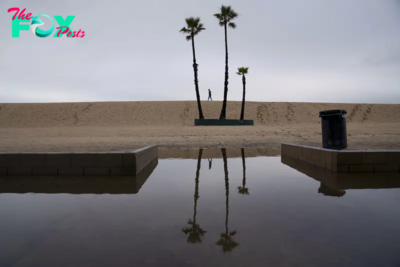US News
What to know about the 'devil comet' expected to pass by Earth in the summer
An enormous "devil comet" will be passing by Earth for the first time in more than seven decades, astronomers say.
The comet, officially known as 12P/Pons-Brooks, got its nickname due to the formation of two "horns" made up of ice and gas.
Experts tell ABC News the comet has been unusually bright compared to others. The general public will be able to see the comet pass through the sky with just binoculars or even the naked eye next year.
MORE: Rare, green comet to pass by Earth Wednesday
Why is it called a devil comet?
Comets are made up of dust, frozen gases, ice and rocks bound together following the formation of the solar system.
Traditionally, as they get closer to the sun, they get slowly warmer and brighter. The ice turns to gas and pulls the dust away, which forms the traditional tail associated with comets.

12P/Pons-Brooks, however, has been undergoing huge increases in brightness with two major eruptions, the first occurring in July 2023 and another earlier this month.
"These outbursts … [have] brought this object from being dim enough that you can only really see it with big professional telescopes to, in a couple of cases, something people can see from their backyard," Dr. Theodore Kareta, a postdoctoral researcher at the Lowell Observatory in Flagstaff, Arizona, told ABC News.
"There aren't that many comets that have outbursts, these sudden increases in brightness, that are so strong, and even fewer that have them a couple of times during one orbit. It seems like Pons-Brooks ... is just really active," he continued.
The shape of 12P/Pons-Brooks's coma -- the fuzzy cloud around the nucleus of the comet -- has an unusual shape -- two "devil horns" -- giving the celestial body its nickname.
Dr. Eliot Herman, a retired professor at the University of Arizona and an amateur astronomer, who has captured images of the comet with a remote telescope, said it will be interesting to see if 12P/Pons-Brooks has more eruptions over the next few months and if they result in the same "devil horns" seen now.
When will it pass by Earth?
The comet is not usually visible, but that could change next year when a total solar eclipse occurs on April 8, 2024, passing over Mexico, the United States and Canada.
MORE: Asteroid that passes nearby could hit Earth in the future, NASA says
During that event, it has the potential to be very bright and be seen with binoculars or the naked eye as long as there are no clouds.
Around the same time, 12P/Pons-Brooks will be at perihelion, the point in the orbit at which it's closest to the sun, on April 21, 2024.
Then 12P/Pons-Brooks will make its closest approach to Earth on June 2, offering scientists and the general public another opportunity to see the comet.
Should we be concerned?
12P/Pons-Brooks was first discovered in 1812 by Jean-Louis Pons and was spotted again in 1883 by William Robert Brooks.
It is a Halley-type comet, meaning it has an orbital period of between 20 and 200 years. In the case of 12P/Pons-Brooks, it passes by Earth every 71 years.

"This means that the last time anyone really observed this thing was in 1954," Kareta said. "So this is part of the reason that the general public hasn't heard about this thing before. And the last time people were [observing] it, they were doing it with photographic plates, they were doing it with binoculars, they were doing it with their eyes."
Scientists have estimated that it has a diameter of at least 17 kilometers, or 10.5 miles.
Despite its menacing sounding nickname and size, experts say 12P/Pons-Brooks doesn't pose any threat to humans.
Herman said this event presents a special opportunity to observe a celestial body.
"People have historically looked up at the sky since people first became self-aware, and being amazed at the events that occur above us, is something that goes back far before civilization," he said. "The events in the sky touches all, I think, in a very historic way. The universe is a big place and a lot of amazing things are occurring all around us. It's worth getting out there and just looking at it and be awestruck."
-

 US News3h ago
US News3h agoU.S. Gathers Global Group to Tackle AI Safety Amid Growing National Security Concerns
-

 US News9h ago
US News9h agoTexas Offers Trump Land on U.S.-Mexico Border for Potential Mass Deportations
-

 US News15h ago
US News15h ago4B Is Not the Winning Strategy to Resist the Patriarchy People Think It Is
-

 US News15h ago
US News15h ago‘Bomb Cyclone’ Threatens Northern California and Pacific Northwest
-

 US News20h ago
US News20h agoClimate Action in Trump 2.0
-

 US News1d ago
US News1d agoWhat Victoria Woodhull’s Presidential Run Can Teach Us About America Today
-

 US News2d ago
US News2d agoThese Races Still Don’t Have a Clear Winner Two Weeks After Election Day
-

 US News2d ago
US News2d agoNYC Issues Drought Warning and Pauses Aqueduct Repairs


























